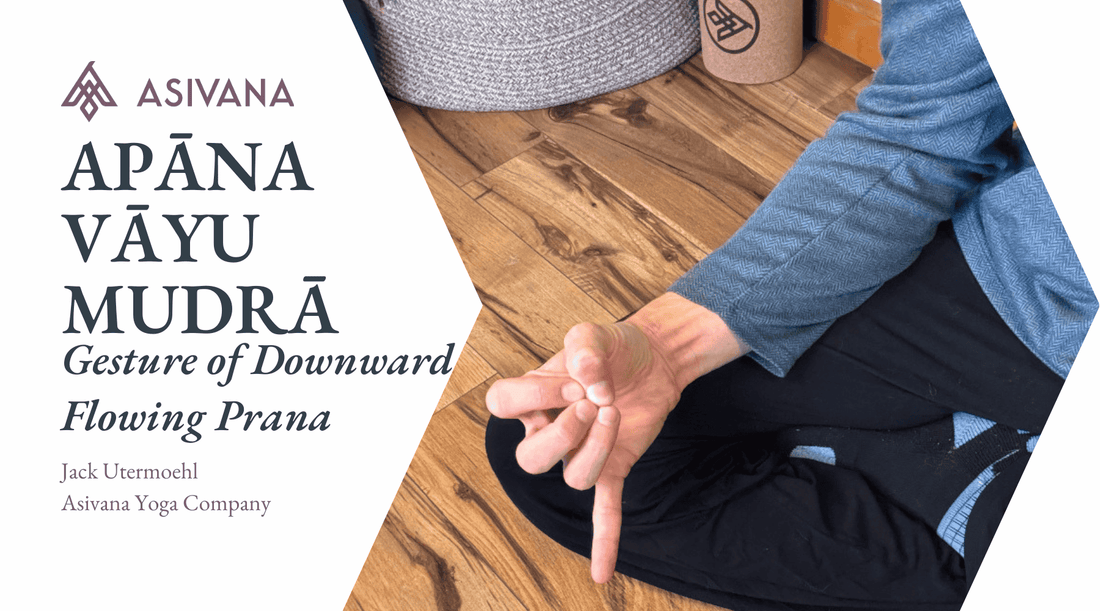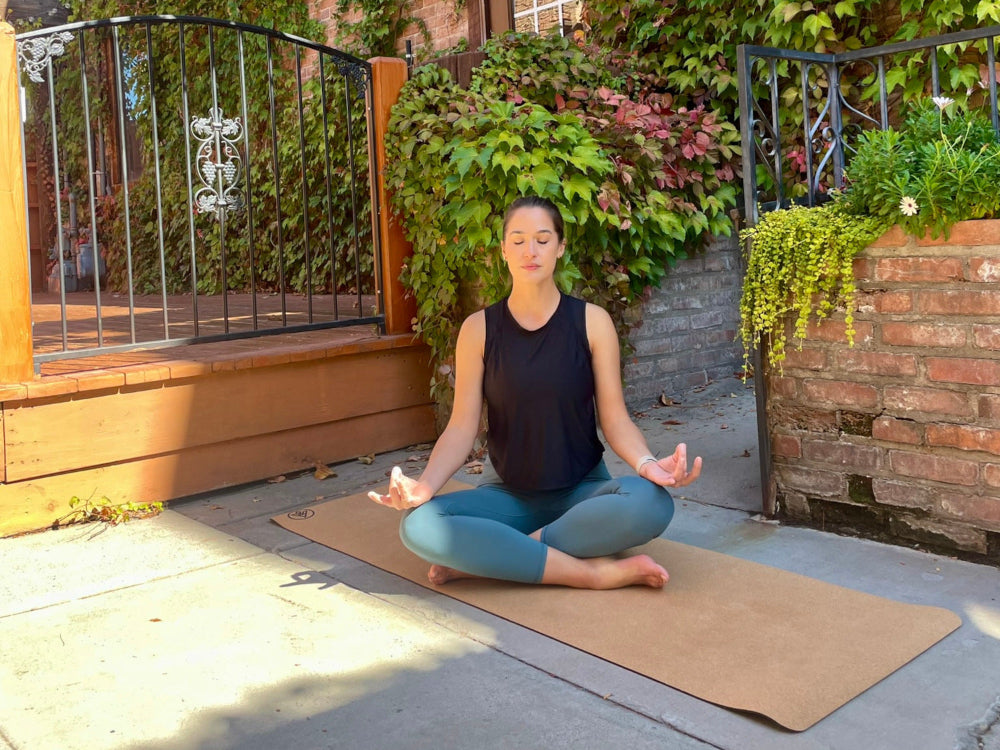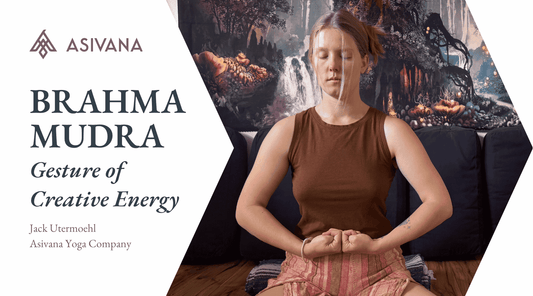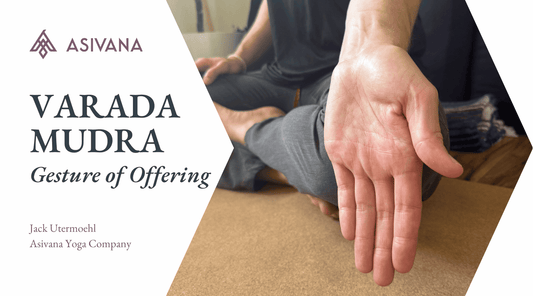
Apana Vayu Mudra - Gesture of Downward Flowing Prana
Jack UtermoehlShare
Apana Vayu Mudra (Gesture of Downward Flowing Prana)
Sanskrit Name: Apāna Vāyu Mudrā - अपान वायु मुद्रा
English Translation: Gesture of Downward Flowing Prana
Phonetic Spelling: Ah-PAH-nah Vah-YOO Moo-Drah
Apana vayu mudra, also known as the gesture of downward flowing prana (life force energy), combines the energies of apana (downward-moving energy) and vayu (air energy), making it a powerful mudra for grounding, relaxation, and heart health.
Apana vayu mudra is sometimes referred to as the “lifesaving mudra” due to its association with calming the heart and regulating circulation.
This mudra directs prana downward and stabilizes the body’s vital functions, making it especially beneficial for digestive, cardiovascular, and emotional well-being. By balancing apana and vayu, the practitioner can achieve a greater sense of stability, release physical and emotional toxins, and calm the nervous system.

Instructions to Perform Apana Vayu Mudra
Find a comfortable seated position and relax your body. Breathe slowly and deeply, centering yourself before you begin.
Hand Position: Touch the tip of your middle finger and ring finger to the tip of your thumb. The index finger should rest gently on the base of the thumb, while the pinky finger remains extended. Rest your hands on your knees or thighs, palms facing upward.
Posture: Sit in a grounded posture such as sukhasana (easy pose) or vajrasana (thunderbolt pose) to support relaxation and stability. If sitting in a chair, ensure your feet are flat on the ground.
Breathing Technique: Inhale deeply through the nose, drawing breath into your belly. Exhale slowly, releasing tension with each breath. Focus on the downward flow of energy and the calming effects of the mudra.
Duration: Practice apana vayu mudra for 5 minutes, especially during meditation or pranayama with downward flowing intention.
Benefits of Apana Vayu Mudra
Apana vayu mudra combines the benefits of both apana mudra and vayu mudra energies, making it a powerful tool for grounding, heart health, and emotional balance. It is particularly beneficial for supporting the heart and circulatory system.
Physical Benefits: Supports heart health by regulating circulation and calming the heart. Helps with digestive and eliminatory processes by stimulating the downward flow of prana.
Mental Benefits: Reduces mental tension and anxiety, bringing a sense of calm and clarity.
Emotional Benefits: Creates emotional stability by grounding the practitioner and releasing fear and worry.
Spiritual Benefits: Balances the flow of prana, creating a sense of stability and harmony within the body.
Capture your insights and deepen your connection with our Yoga Journal.Elevate Your Mudra Practice
Symbolism and Meaning of Apana Vayu Mudra
Apana (downward-flowing energy) and vayu (air) are two of the five prana vayus, responsible for governing different aspects of bodily functions. Apana vayu mudra balances these two energies, directing prana downward to stabilize the body’s vital processes. It is often called the “lifesaving mudra” because of its positive effects on the cardiovascular system and its ability to calm the heart in moments of stress.
This mudra is symbolic of grounding, stability, and the release of toxic energy, both physical and emotional. It helps the practitioner focus on the present moment and calm the mind.
When to Practice Apana Vayu Mudra
Apana vayu mudra can be practiced during meditation, pranayama, or any time you need to calm your heart or reduce anxiety. It is particularly useful in moments of stress or fear, or when dealing with emotional turmoil.
This mudra is ideal for supporting heart health and circulation, making it a helpful tool during times of physical exertion or when seeking to calm the nervous system.
A duration of 5 minutes is recommended, although shorter sessions can still bring calming and grounding benefits.
Contraindications for Apana Vayu Mudra
Apana vayu mudra is generally safe for all practitioners. However, those with low blood pressure or certain heart conditions should consult with a healthcare provider before using this mudra for extended periods.
Additional Insights on Apana Vayu Mudra
Affirmations: "I release fear and anxiety and allow my heart to find peace." / "I am grounded, calm, and connected to my breath."
Visualization: While holding apana vayu mudra, visualize energy flowing from your heart down into the earth, grounding you and creating a stable foundation. Imagine this energy calming your heart and bringing peace to your entire being.
Associated Chakras: Apana vayu mudra primarily activates the Muladhara (root chakra), promoting grounding, and the Anahata (heart chakra), supporting emotional balance and heart health.
Paired Asanas: Works well with grounding postures such as Tadasana (mountain pose) or seated postures like Sukhasana (easy pose) to enhance stability and connection to the earth.
Related Pranayama: Pair apana vayu mudra with nadi shodhana (alternate nostril breathing) or ujjayi breath (victorious breath) to calm the heart and balance prana.
Meditation Techniques: Use apana vayu mudra during mindfulness meditation or a body scan to enhance relaxation and emotional stability.
Variations and Modifications
Alternative Hand Positions: Apana Mudra, Vayu Mudra
Adaptations for Beginners: Beginners can start by holding apana vayu mudra for shorter periods, such as 2 minutes, and gradually increasing the duration as they become more comfortable with the gesture. Resting the elbows on a cushion or yoga block can provide additional support if needed.
—— 🕉 ——

Personal Insights
Apana vayu mudra is a uniquely powerful mudra that can impact the prana felt in your body. Unlike many mudras, this one I felt almost immediately. This may be due to my already grounded nature and feeling the amplification of apana vayu prana moving in my body.
I feel grounded and strong when I use apana vayu mudra. I use this mudra to prepare myself for long days. I also perform this mudra when I need to ground my wild thought patterns that are flying around without being able to ‘capture’ one and execute on the thought.
This allows me to ground into the energy of the moment, feel my prana moving downward from the Vata airiness that can be experienced when all we do is heady work.
Apana vayu mudra has allowed me to remember I’m not just a floating talking head but that I have a whole body of prana flowing and coursing through me.
Let me know your experience in the comments below. I’m curious to know what you feel when you practice this mudra.












2 comments
Vijay Lakshmee Ramlochan, you do not need to always use both hands.
In fact, if one hand is sufficient to hold the mudra, you can balance it with another or rest the other hand.
Do we need to always use both hands when doing mudras